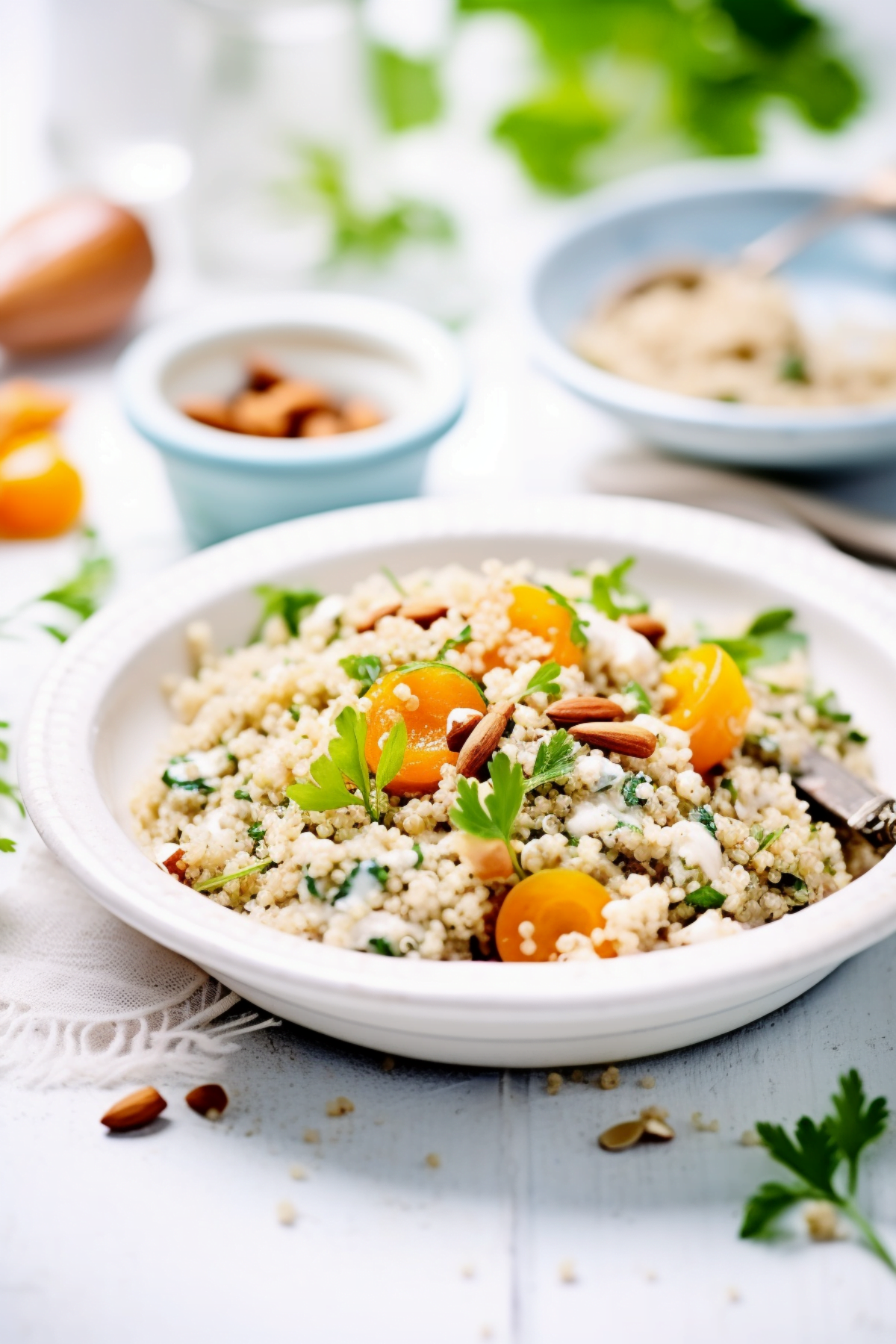Bulgur Wheat Pilaf with Apricots and Almonds: A Symphony of Flavors
Imagine a dish that not only tantalizes your taste buds with its delightful array of flavors but also nourishes your body with wholesome goodness. That’s exactly what you get with our Bulgur Wheat Pilaf with Apricots and Almonds. This exquisite recipe is a celebration of the vibrant and healthful Mediterranean diet, specifically drawing inspiration from the culinary traditions of the Levant.
Whether you’re looking for a nutritious side to complement your main course or a light and savory meal on its own, this bulgur wheat pilaf is the perfect choice. With its sweet apricots, crunchy almonds, and aromatic spices, it’s a dish that promises to leave you both satisfied and eager for the next bite.
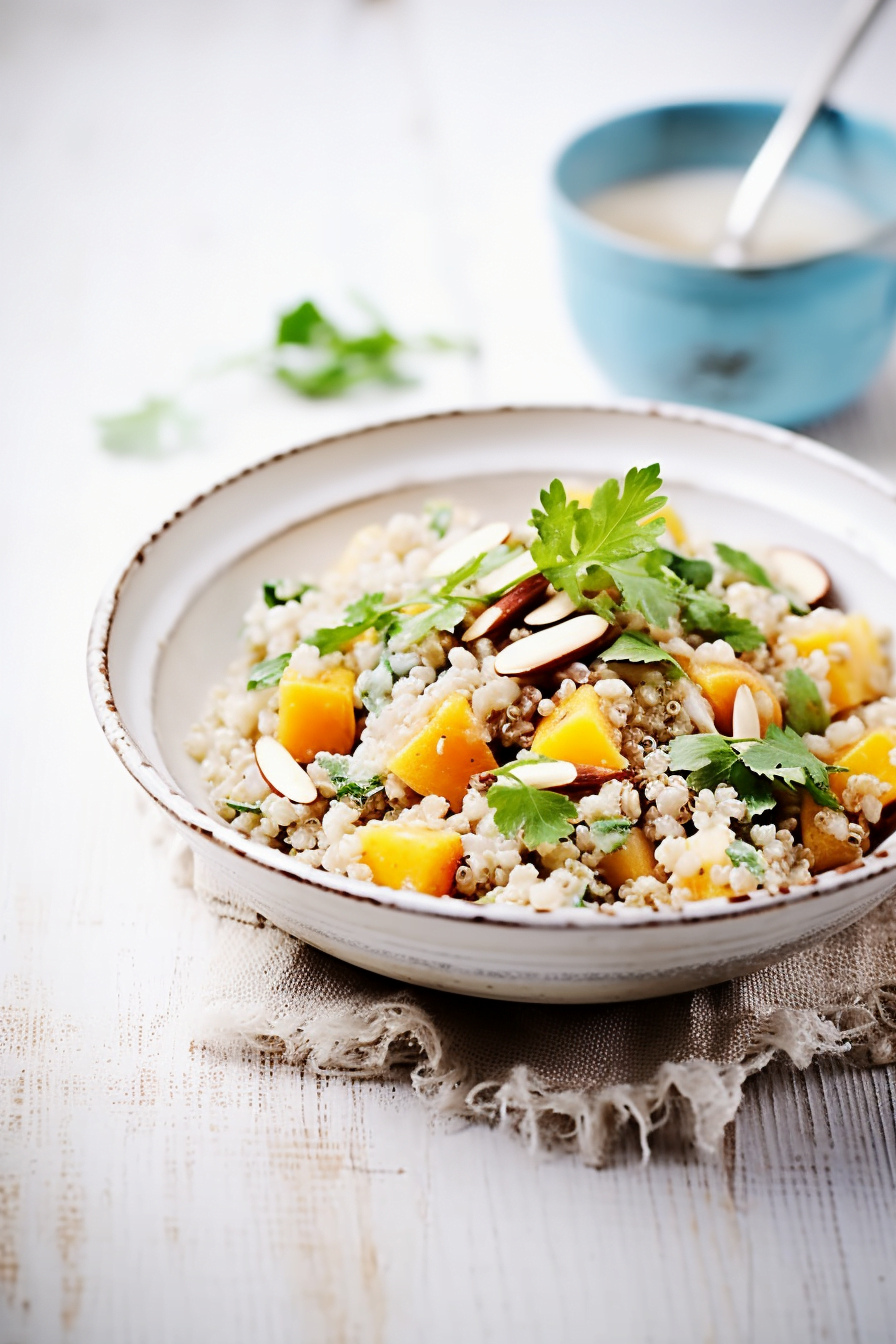
Recipe Details and Background
The origins of this Bulgur Wheat Pilaf with Apricots and Almonds are steeped in the history of the Eastern Mediterranean, where bulgur has been a staple for centuries. In this region, pilafs are a cornerstone, often served at gatherings and celebrations, symbolizing hospitality and abundance. Our recipe is a modern twist on these traditional pilafs, incorporating the sweetness of apricots and the richness of almonds to create a dish that’s both comforting and exotic.
As a chef deeply passionate about Mediterranean cuisine, I’ve always been inspired by the way this region’s dishes balance health and flavor. This recipe is no exception. The bulgur wheat provides a hearty base, rich in fiber and protein, while the apricots add a natural sweetness and are a great source of vitamins. Almonds, toasted to perfection, bring a satisfying crunch and a dose of healthy fats. The spices, cinnamon and cumin, are not just there for their warm, inviting aroma; they also offer a myriad of health benefits.
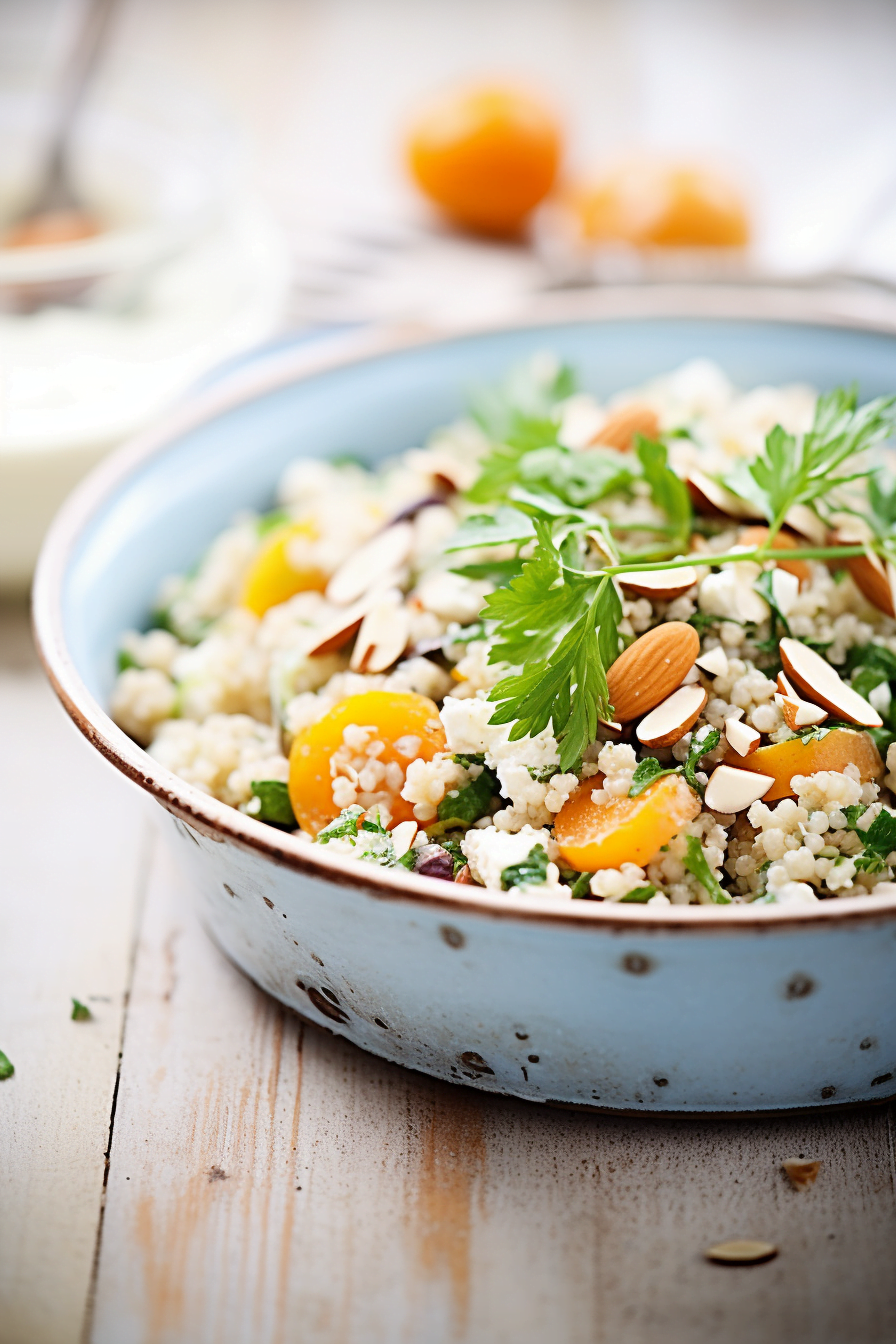
The Method: Crafting the Perfect Pilaf
Creating this pilaf is akin to painting a picture; every step adds depth and color to the final masterpiece. Begin by sautéing the onions in olive oil until they’re just translucent. This is the foundation of flavor, so take your time to ensure they’re perfectly cooked without browning too much.
Next, the bulgur wheat is toasted with the onions, which is crucial for unlocking its nutty essence. When adding the spices, make sure to stir them in quickly to prevent burning, as this could impart a bitter taste. Pouring in the vegetable broth should be done carefully, as it will sizzle and steam. Once the broth is added, resist the urge to stir; this could make the bulgur gummy. Patience is key as the bulgur simmers and absorbs the liquid.
When it’s time to add the apricots, simply scatter them atop the bulgur and cover the pan. The residual heat will plump them up perfectly. After fluffing the bulgur, gently fold in the almonds to maintain the integrity of the grains. A final drizzle of lemon juice will brighten the dish and bring all the flavors together. Remember, the key to a perfect pilaf is in the details: the precise sautéing, the gentle folding, and the patient simmering.
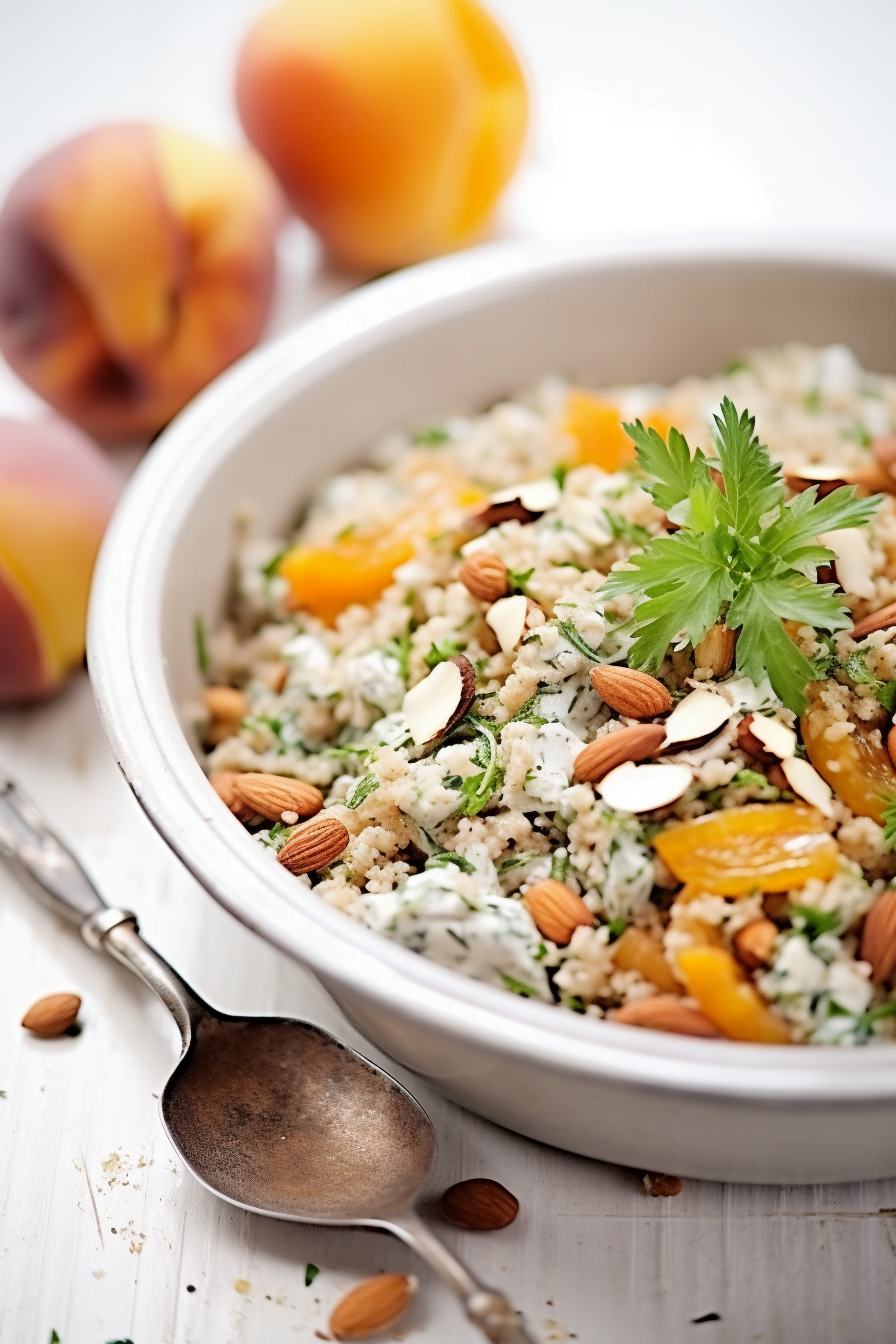
Variations
Moroccan-Inspired Pilaf
For a North African twist, incorporate ingredients like chickpeas, raisins, and a pinch of saffron. The chickpeas add protein and substance, making it a meal in itself, while saffron imparts a luxurious aroma and golden hue.
Herbed Pilaf
Enhance the freshness of the dish by adding a medley of herbs such as mint, dill, and cilantro. Each herb brings its unique flavor profile, creating a more complex and garden-fresh pilaf.
Spicy Pilaf
If you enjoy a bit of heat, introduce some diced jalapeños or a teaspoon of harissa paste. The spiciness will complement the sweet apricots and add an exciting kick to the pilaf.
Substitutions
Understanding that dietary needs and pantry stocks vary, here are some thoughtful substitutions to tailor the pilaf to your preferences:
Quinoa for Bulgur
Quinoa is an excellent gluten-free alternative to bulgur wheat. It’s a complete protein and will lend a slightly different texture to the pilaf.
Other Dried Fruits
Dried cranberries or cherries can replace apricots, offering a tart contrast to the nutty and spiced elements of the dish.
Nut Varieties
Walnuts or pine nuts can stand in for almonds, each bringing their unique flavor and texture to the pilaf.
FAQ Section
Here are answers to some common questions you might have about preparing this dish:
Can I make this pilaf ahead of time?
Yes, this pilaf can be made in advance and reheated, making it perfect for meal prep or entertaining.
Is bulgur wheat gluten-free?
No, bulgur wheat is not gluten-free as it comes from wheat. For a gluten-free option, use quinoa or rice.
How can I make this dish more protein-rich?
Add chickpeas or lentils to the pilaf for an extra boost of protein.
Can I use fresh apricots instead of dried?
Fresh apricots can be used when in season, but they will have a different texture and moisture content.
What can I serve with this pilaf?
This pilaf pairs beautifully with grilled meats, roasted vegetables, or as part of a mezze platter.
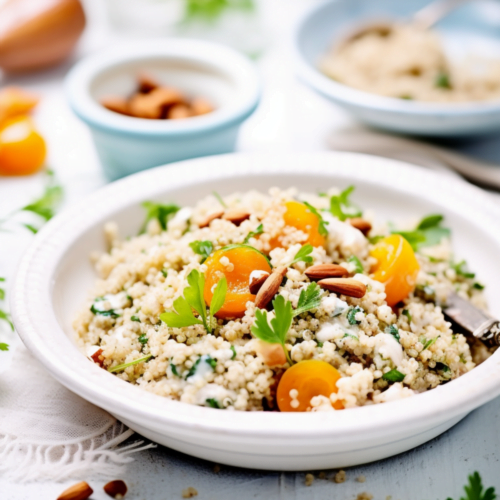
Bulgur Wheat Pilaf with Apricots and Almonds
Equipment
- Medium saucepan with lid
- Cutting board
- Chef's knife
- Measuring cups and spoons
- Wooden spoon or spatula
- Fork for fluffing
Ingredients
- 1 cup bulgur wheat 182g / 6.4 oz
- 2 cups low-sodium vegetable broth 473 ml / 16 fl oz
- 1/2 cup dried apricots, diced 90g / 3.2 oz
- 1/2 cup almonds, toasted and chopped 60g / 2.1 oz
- 1 small onion, finely chopped 70g / 2.5 oz
- 2 tablespoons olive oil 30 ml / 1 fl oz
- 1/4 teaspoon ground cinnamon
- 1/4 teaspoon ground cumin
- 1/2 teaspoon sea salt
- 1/4 teaspoon freshly ground black pepper
- 2 tablespoons fresh parsley, chopped for garnish
- 1 tablespoon lemon juice 15 ml / 0.5 fl oz
Instructions
- Heat the olive oil in a medium saucepan over medium heat. Add the chopped onions and sauté until they become translucent, about 3-4 minutes.
- Stir in the bulgur wheat and toast for 2 minutes, ensuring the grains are well coated with oil.
- Add the ground cinnamon, cumin, salt, and black pepper, stirring to distribute the spices evenly.
- Pour in the vegetable broth and bring the mixture to a boil. Reduce heat to low, cover, and simmer for 15 minutes, or until most of the liquid is absorbed.
- Toss in the diced apricots, cover the pan, and let it stand off the heat for 5 minutes. The residual steam will soften the apricots.
- Fluff the bulgur with a fork, then gently fold in the toasted almonds.
- Drizzle with lemon juice and adjust seasoning if necessary.
- Garnish with fresh parsley before serving.
Notes

